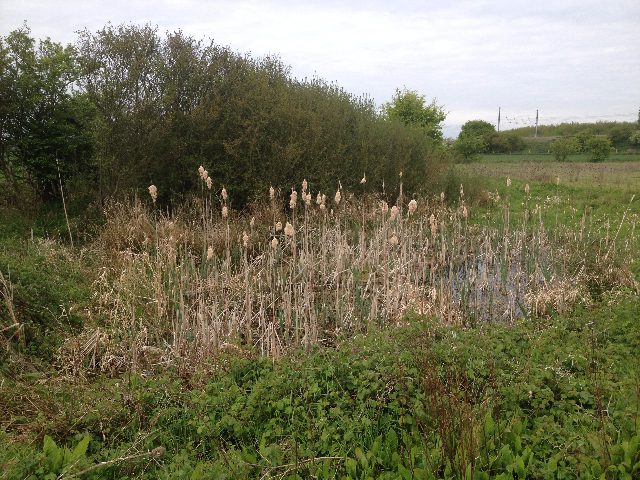Why wildlife surveys, biodiversity protections and ecological planning are vital to truly sustainable energy projects.
When many estate owners, land managers or commercial operators first explore renewable energy installations, they often share the same concern:
“What about the ecological constraints? Won’t that make the project impossible?”
From bat roost assessments to Great Crested Newt protections, from habitat buffers to seasonal restrictions, ecological considerations can appear, at first glance, to be a hurdle. For some, they’ve even become a deterrent.
But the reality is very different.
In our experience delivering renewable projects across commercial estates, industrial sites and large private estates, including our most recent installation on a Grade II listed 18th-century estate, ecology is not a barrier.
It’s a vital part of doing renewable energy properly.
And the sites that embrace it benefit the most, environmentally, ethically and reputationally.
Why Ecology Feels Like a “Barrier” (But Isn’t)
Let’s be honest: ecological surveys and assessments add time, paperwork and coordination. Species surveys may need to be conducted at certain times of year.
Mitigation plans must be reviewed and approved.
Local authorities scrutinise them carefully.
Many estate owners and commercial operators worry that conservation areas, ecology and renewable energy are at odds, that bat surveys, Great Crested Newt assessments or broader ecological constraints will delay or even block their plans for solar, battery storage or other sustainable solutions. In reality, these ecological surveys for solar PV exist not to hinder progress but to ensure renewable installations strengthen local biodiversity rather than disturb it.
Far from stopping a project, considerations such as bats and solar panels planning requirements, habitat protections and species mitigation simply guide a more thoughtful approach. When handled correctly, biodiversity and solar installations work hand-in-hand, creating renewable energy systems that respect wildlife, meet planning expectations and deliver long-term environmental and commercial benefits.
To some project teams, this can feel like friction.
But here’s the truth we want more clients to understand:
Ecological requirements don’t stop renewable projects…..they guide them in the right direction.
With the right planning and the right ecological expertise, the presence of protected species like bats or Great Crested Newts rarely prevents a project. It simply ensures it is designed with integrity, sensitivity and long-term stewardship in mind.
A Real-World Example: Ecology Working With Renewable Energy
On our recent project, a comprehensive solar and battery installation at a Grade II listed private estate, ecological considerations were central from day one.
The estate bordered several protected zones, including:
- Medmerry Compensatory Habitat
- Chichester Harbour Special Protection Zone of Influence
- Pagham Harbour SPF Zone of Influence
And the site itself supported documented populations of:
- Bats (multiple species)
- Great Crested Newts
Far from being a roadblock, these factors helped shape a solution that was:
- Discreet
- Sensitive
- Beautifully integrated
- Fully compliant
- Supportive of local wildlife
- Stronger and more sustainable as a result
Working alongside ecological specialists and drawing on wider guidance from organisations like Lizard Landscape Ecology, we were able to deliver a fully compliant installation without impacting habitats or species.
The outcome?
- A delighted client.
- A protected heritage site.
- A thriving ecosystem.
- A high-performing renewable energy system with an exceptionally low visual and environmental footprint.
This is what modern sustainability looks like.
Why Ecology Strengthens Renewable Energy Projects
1. Ecology Enhances Your Sustainability Credentials
Any business or estate claiming to be “green” cannot ignore the wildlife in its care.
Renewables that protect biodiversity are more authentic, more defensible and more valued.
2. It Future-Proofs Your Planning Compliance
Local authorities increasingly expect renewable energy proposals to demonstrate ecological consideration. Doing it properly reduces risk and avoids delays later.
3. It Builds Trust With Communities & Stakeholders
Whether it’s a private estate, a logistics hub or a business park, demonstrating care for local habitats builds goodwill and strengthens your environmental reputation.
4. It Creates Better Projects Overall
We have never seen a renewable installation weakened by ecological involvement, only improved.
Biodiversity adds character, responsibility and a richer narrative to your sustainability story.
Commercial Sites Benefit Too. Not Just Private Estates
While bat surveys and newt mitigation are traditionally associated with rural estates, we increasingly see ecological considerations shaping projects in:
- Industrial estates
- Logistics parks
- Warehousing clusters
- Business parks
- Agricultural processing sites
- Heritage commercial properties
These organisations benefit enormously from demonstrating a commitment to both carbon reduction and biodiversity protection, especially as supply chains demand stronger environmental governance from partners.
Ecology isn’t a burden in these environments, it’s a competitive advantage.
Verdant Future’s Approach: Renewable Energy With Integrity
We don’t view ecology as a box-ticking exercise.
We see it as part of a responsible, whole-site approach to sustainability.
Our process involves:
- Early ecological engagement
- Working with specialist ecologists where needed
- Designing around habitats
- Minimising visual and ecological impact
- Full planning and regulatory coordination
- Delivering systems that respect both place and wildlife
This is how we achieve results like our Grade II estate project, systems that perform exceptionally while enhancing the natural environment rather than disturbing it.
And yes, it takes time.
But it’s the right kind of time.
Time invested in the future.
Ecology Is Not an Obstacle. It’s an Opportunity
If the UK is to build a genuinely sustainable energy future, then renewable installations must work with the natural world, not simply around it.
And when approaches are sensitive, well researched and properly planned, ecology does not limit renewable energy…
It elevates it.
It deepens it.
It makes it real.
Interested in a renewable energy project that respects your landscape, wildlife and heritage?
We’d love to help
Verdant Future
Real People. Real Power. Real Solutions.

